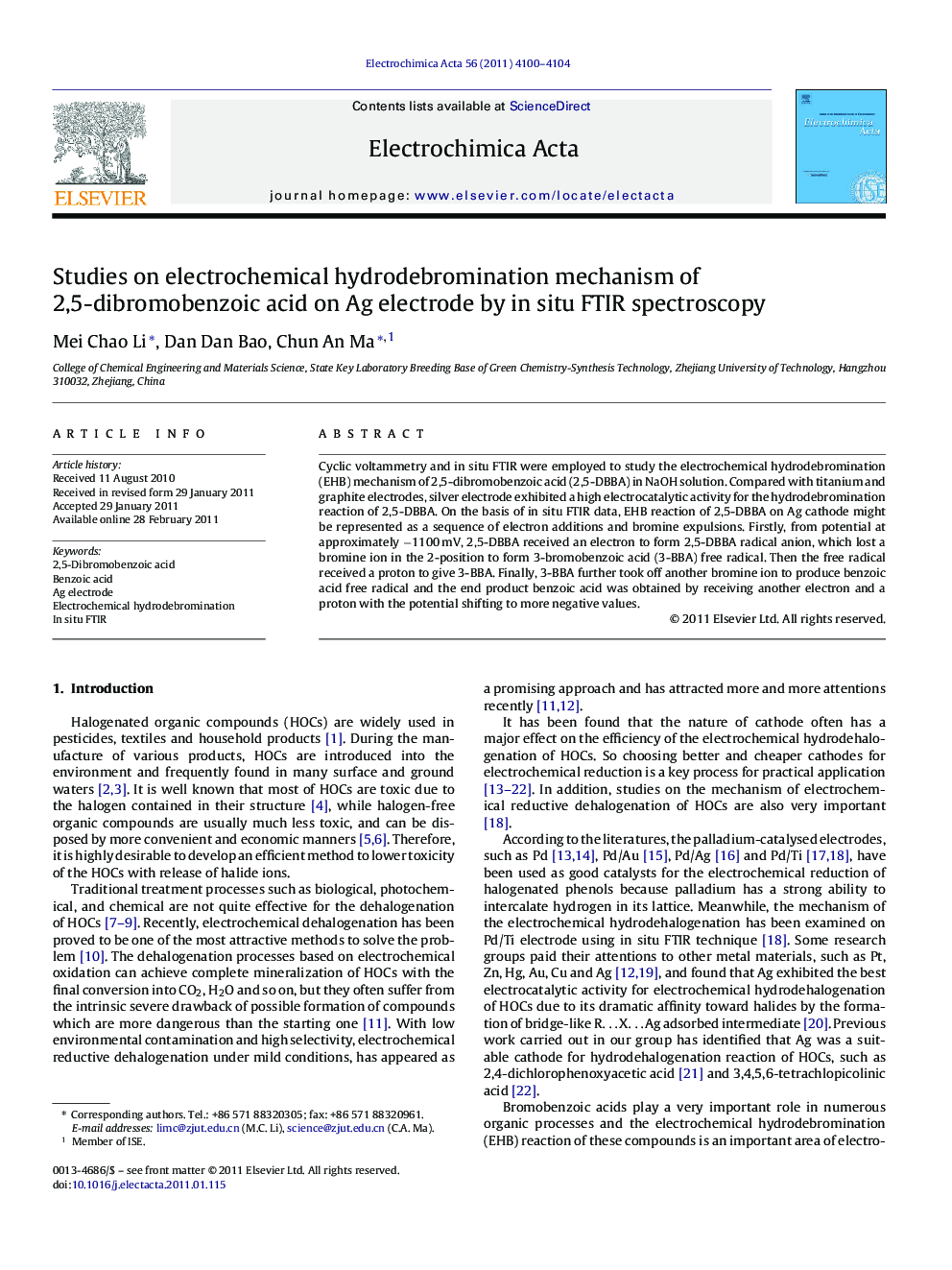| کد مقاله | کد نشریه | سال انتشار | مقاله انگلیسی | نسخه تمام متن |
|---|---|---|---|---|
| 190270 | 459695 | 2011 | 5 صفحه PDF | دانلود رایگان |

Cyclic voltammetry and in situ FTIR were employed to study the electrochemical hydrodebromination (EHB) mechanism of 2,5-dibromobenzoic acid (2,5-DBBA) in NaOH solution. Compared with titanium and graphite electrodes, silver electrode exhibited a high electrocatalytic activity for the hydrodebromination reaction of 2,5-DBBA. On the basis of in situ FTIR data, EHB reaction of 2,5-DBBA on Ag cathode might be represented as a sequence of electron additions and bromine expulsions. Firstly, from potential at approximately −1100 mV, 2,5-DBBA received an electron to form 2,5-DBBA radical anion, which lost a bromine ion in the 2-position to form 3-bromobenzoic acid (3-BBA) free radical. Then the free radical received a proton to give 3-BBA. Finally, 3-BBA further took off another bromine ion to produce benzoic acid free radical and the end product benzoic acid was obtained by receiving another electron and a proton with the potential shifting to more negative values.
Research highlights
► Silver is a good catalyst for the hydrodebromination of 2,5-dibromobenzoic acid.
► 3-Bromobenzoic acid as main intermediate product.
► The finally product is benzoic acid.
► In situ FTIR is useful to study the electrochemical hydrodebromination mechanism.
Journal: Electrochimica Acta - Volume 56, Issue 11, 15 April 2011, Pages 4100–4104